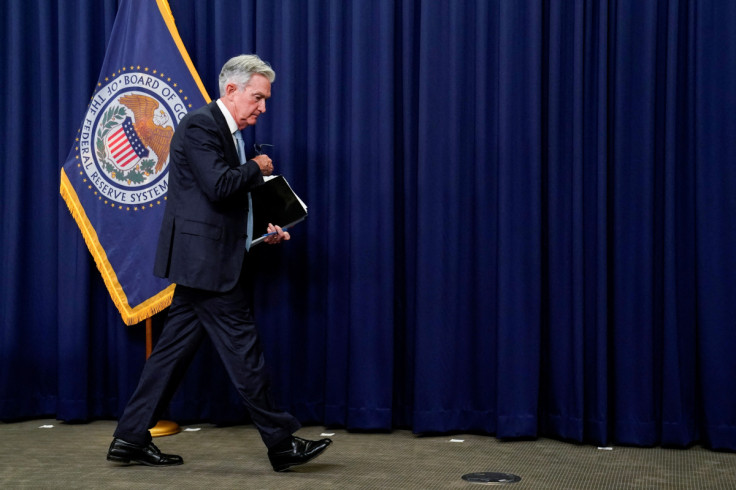Are Markets Tempting Fate By Doubting The Fed?
Disinflation is the clear trend at the moment, as Fed Chair Jerome Powell is quick to point out. January's 6.4% CPI print, the seventh decline in as many months, lends validation to this.
With disinflation underway, we've begun to see early indications that the Fed's campaign of demand destruction through rate hikes and Quantitative Tightening is starting to have its intended effect.
Moreover, the lag effect from these policies is only just now starting to be felt in the economy. As there's typically a nine to 12-month delay between the time a rate hike is enacted and when its impact is fully experienced, we should expect a "rolling thunder" of shockwaves from the 450 basis points worth of rate hikes made since last March to slam into the economy over the next several quarters. And, of course, the Fed is planning to continue hiking still from here.
This should slow the economy materially further this year.
That will likely continue to compress corporate profits, bringing down earnings, and thus, stock prices.
Yet the stock market seems blithely unconcerned. Not only have predictions of a "soft landing" built to a crescendo since the start of the year, but a new narrative that there will be "no landing"--no recession, no earnings dip--is suddenly circulating.
The market has repeatedly rallied whenever Chairman Powell has publicly spoken, seemingly hearing what it wants to hear from whatever words he speaks. And it has consistently priced in future rate cuts far earlier than Powell is trying to guide the public.
So, the key question now is: who will be proven right? The Fed or the markets?
At this point, it's hard not to see the forces of demand destruction building over the coming months. In fact, it's possible the Fed may have already tightened too much already, and that further tightening will only make a coming recession deeper and more painful.
Powell has been clear he's happy to err on the side of pushing the economy into recession rather than allow inflation to resume. He's confident the Fed has the tools to goose the economy back to life if needed. He's much less sure about his odds of killing the inflation monster.
Many people, myself included, think the responsible step would be for the Fed to pause now, and wait to see if the 450 basis points worth of rate hikes is enough to get inflation under control. If not, it can simply resume them again.
Because the danger is that if the Fed is overtightening (or has already done so), the odds of "something breaking" in the economy rise. This indeed would likely cause the Fed to pivot, but not in the way the market is currently hoping for.
Even if the market is correct in projecting a quicker need for a rate pause or cut, this policy reversal would most likely be in response to a dire economic emergency caused by higher rates and requiring the Fed's intervention, such as a breakdown in interbank lending or credit markets. A scenario in which rates are cut to avoid economic catastrophe is hardly a catalyst for robust growth. So, if rate hikes end up breaking some area of the economy, the market would get the rate cut it is hoping for, but the outcome would be terribly disappointing.
Sooner or later, the economy will reflect the destruction of demand due to higher capital costs currently underway. Unless a substantial new driver of incremental economic growth emerges (an unlikely scenario), the market will need to reprice downwards as deteriorating economic conditions become incontrovertible. The longer the markets doubt the Fed's resolve and the higher asset prices rally in response, the bigger the correction may be. And a correction will likely arrive as economic data or actions by the Fed make it apparent that it isn't going to blink and that its hawkish policy is increasing the odds of a deeper recession or a systemic crisis, possibly putting markets at risk for a lower bottom than we saw in 2022.
As hard as it is to imagine right now, if demand destruction accelerates from here, the markets start to reprice downwards, and a serious recession ensues, we may find ourselves starting to worry more about the risks of deflation than inflation in the second half of 2023.
Bottom Line
Unfortunately, none of this is great news for struggling consumers. The higher cost of borrowing will increasingly tighten household budgets at a time when the Fed seems intent on creating some weakness in labor markets. While the January CPI data suggest inflation is easing, taming it may take longer than most would like. And lower inflation doesn't equate to lower prices; it just means prices aren't rising as fast. A reduction in the cost of essentials like food, energy and shelter still may not arrive for some time--if it arrives at all. A recession later this year could bring that about, but of course, that will bring with it a whole new set of problems.
(Adam Taggart is the founder and CEO of Wealthion.)

© Copyright IBTimes 2025. All rights reserved.





















